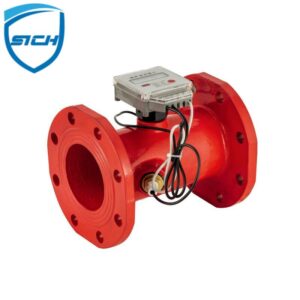Chinese fire fighting valve systems ensure product durability and longevity through a combination of robust design, high-quality materials, rigorous testing, and proactive maintenance practices.
Here are several key factors that contribute to the durability and longevity of these systems:
- High-Quality Materials: Chinese fire fighting valve systems are constructed using high-quality materials such as ductile iron, stainless steel, brass, and bronze. These materials are chosen for their corrosion resistance, mechanical strength, and durability in demanding fire protection environments.
- Robust Construction: Fire fighting valve systems are engineered with robust construction features such as heavy-duty casting, reinforced components, and precision machining to withstand high pressures, temperature fluctuations, and mechanical stresses over time.
- Corrosion Resistance: Fire fighting valve systems are designed to resist corrosion caused by exposure to water, chemicals, and environmental factors. Protective coatings, corrosion-resistant alloys, and sealing materials are used to enhance the longevity of valves and prevent degradation over time.
- Sealing Mechanisms: Fire fighting valve systems incorporate reliable sealing mechanisms such as resilient seat designs, O-rings, and gaskets to ensure leak-tight performance and prevent water ingress or loss of pressure during operation.
- Pressure and Flow Ratings: Valves are designed and tested to meet stringent pressure and flow ratings specified by international standards and regulatory requirements. By ensuring that valves can withstand the maximum pressures and flow rates encountered in fire suppression systems, product durability and longevity are assured.
- Testing and Certification: Chinese fire fighting valve systems undergo comprehensive testing and certification procedures to verify their performance, reliability, and durability. Testing may include hydrostatic pressure testing, endurance testing, China fire fighting Valve System manufacturer and functional testing to validate product integrity and compliance with industry standards.
- Quality Assurance Processes: Manufacturers implement stringent quality assurance processes throughout the manufacturing process to maintain product consistency and reliability. Quality control measures such as inspection, testing, and traceability ensure that only high-quality components and finished products are delivered to customers.
- Proactive Maintenance: Regular inspection, maintenance, and servicing of fire fighting valve systems are essential to prolonging their lifespan and ensuring reliable performance. Routine maintenance tasks such as lubrication, cleaning, and seal replacement help prevent corrosion, wear, and mechanical failures that could compromise system integrity.
- Compatibility and Interoperability: Fire fighting valve systems are designed to be compatible and interoperable with other components of fire suppression systems, including pumps, hoses, nozzles, and control devices. Compatibility ensures seamless integration and optimal performance of the entire system, contributing to its longevity and reliability.
- Technical Support and Training: Manufacturers provide technical support, training, and resources to fire protection professionals responsible for the installation, operation, and maintenance of valve systems. Training programs and documentation help ensure that valves are installed correctly, operated safely, and maintained properly to maximize their lifespan and performance.
By incorporating these design considerations, manufacturing processes, and maintenance practices, Chinese fire fighting valve systems are engineered to deliver durable, reliable, and long-lasting performance in critical fire protection applications, safeguarding lives and property against the threat of fire.

How do Chinese fire fighting Valve System ensure product durability and longevity?
